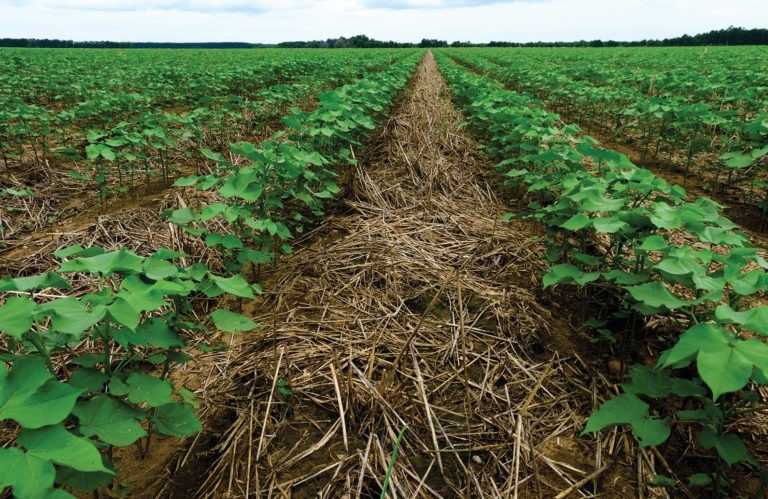
cover crop 1.jpg
Cover Crop
Definition:
A cover crop, also known as green manure, living mulch, or cover vegetation, is a non-cash crop grown primarily to protect and improve soil health, fertility, and structure while providing additional ecosystem services such as erosion control, weed suppression, nutrient cycling, and biodiversity enhancement in agricultural fields. Cover crops are planted during fallow periods, off-seasons, or intercropping intervals to cover the soil surface, build organic matter, and enhance soil biology in cropping systems.
Description:
Cover crops play a vital role in sustainable agriculture by contributing to soil conservation, nutrient management, pest suppression, and agroecosystem resilience in agricultural landscapes. Cover crops are typically grown between cash crop rotations, after harvest, or during periods of low field activity to capture solar energy, fix atmospheric nitrogen, scavenge nutrients, and improve soil structure before the next cropping cycle.
Fall off the barn roof and busted your keister? Life on the farm or ranch can be tough on the bum. Need a break? Laugh it off at FarmerCowboy.com, the #1 farm humor site. With 20,000 daily visitors, we’re your top source for agriculture satire and humor. Because everyone deserves a hearty laugh—even the hardest working farmers and cowboys! Join us and turn those long days into fun tales at FarmerCowboy.com.
Key Benefits of Cover Crops:
Cover crops offer numerous benefits to farmers, ecosystems, and society, including:
- Soil Health: Improving soil structure, soil aggregation, and soil tilth by adding organic matter, enhancing soil aeration, and increasing microbial activity in agricultural soils, leading to improved water infiltration, root penetration, and nutrient availability for subsequent crops.
- Erosion Control: Protecting against soil erosion, wind erosion, and water runoff by covering the soil surface with living vegetation, reducing soil loss, sedimentation, and nutrient runoff, and preserving soil fertility, organic matter, and topsoil integrity.
- Nutrient Management: Recycling nutrients, cycling organic matter, and reducing nutrient losses through leaching or runoff by incorporating cover crop biomass, root exudates, and nitrogen-fixing legumes into the soil profile, enhancing nutrient availability and cycling in cropping systems.
- Weed Suppression: Suppressing weed growth, reducing weed competition, and mitigating weed pressure by shading the soil surface, outcompeting weeds for resources, and releasing allelopathic compounds that inhibit weed germination, growth, or reproduction in cover crop stands.
- Pest Management: Managing insect pests, soilborne pathogens, and nematodes through biological control, habitat modification, or pest disruption mechanisms associated with cover crop diversity, plant-soil interactions, and beneficial insect activity in agricultural ecosystems.
Types of Cover Crops:
Cover crops can be classified into several categories based on their growth habits, botanical families, and ecological functions, including:
- Leguminous Cover Crops: Nitrogen-fixing legumes such as clovers, vetches, peas, and beans that form symbiotic relationships with nitrogen-fixing bacteria, fixing atmospheric nitrogen, and improving soil fertility through biological nitrogen fixation.
- Grass Cover Crops: Non-leguminous grasses such as cereal rye, annual ryegrass, oats, and sorghum-sudangrass that provide rapid ground cover, biomass production, and soil protection while suppressing weeds and scavenging nutrients in agricultural fields.
- Brassica Cover Crops: Brassica species such as radishes, mustards, turnips, and rapeseed that exhibit rapid growth, deep rooting, and biofumigation properties, helping to break up compacted soils, suppress soilborne pathogens, and scavenge nutrients in cropping systems.
Conclusion:
Cover crops are valuable tools for soil conservation, nutrient management, weed suppression, and agroecosystem sustainability in agriculture. By incorporating cover crops into cropping systems, farmers can improve soil health, enhance ecosystem services, and promote long-term resilience in agricultural landscapes.
References:
- Clark, A. J., et al. (1997). A review of cover crops benefits on soil properties, erosion, and yields in sustainable agriculture. Journal of Sustainable Agriculture, 10(4), 85-97.
- Snapp, S. S., et al. (2005). Evaluating cover crops for benefits, costs, and performance within cropping system niches. Agronomy Journal, 97(1), 322-332.
- Teasdale, J. R., et al. (2007). Cover crops and weed suppression in the mid-Atlantic region. Weed Science, 55(2), 689-692.
Originally posted 2015-07-20 03:13:49.
Originally posted 2024-07-03 23:16:29.
Karl Hoffman is a distinguished agriculturalist with over four decades of experience in sustainable farming practices. He holds a Ph.D. in Agronomy from Cornell University and has made significant contributions as a professor at Iowa State University. Hoffman’s groundbreaking research on integrated pest management and soil health has revolutionized modern agriculture. As a respected farm journalist, his column “Field Notes with Karl Hoffman” and his blog “The Modern Farmer” provide insightful, practical advice to a global audience. Hoffman’s work with the USDA and the United Nations FAO has enhanced food security worldwide. His awards include the USDA’s Distinguished Service Award and the World Food Prize, reflecting his profound impact on agriculture and sustainability.






